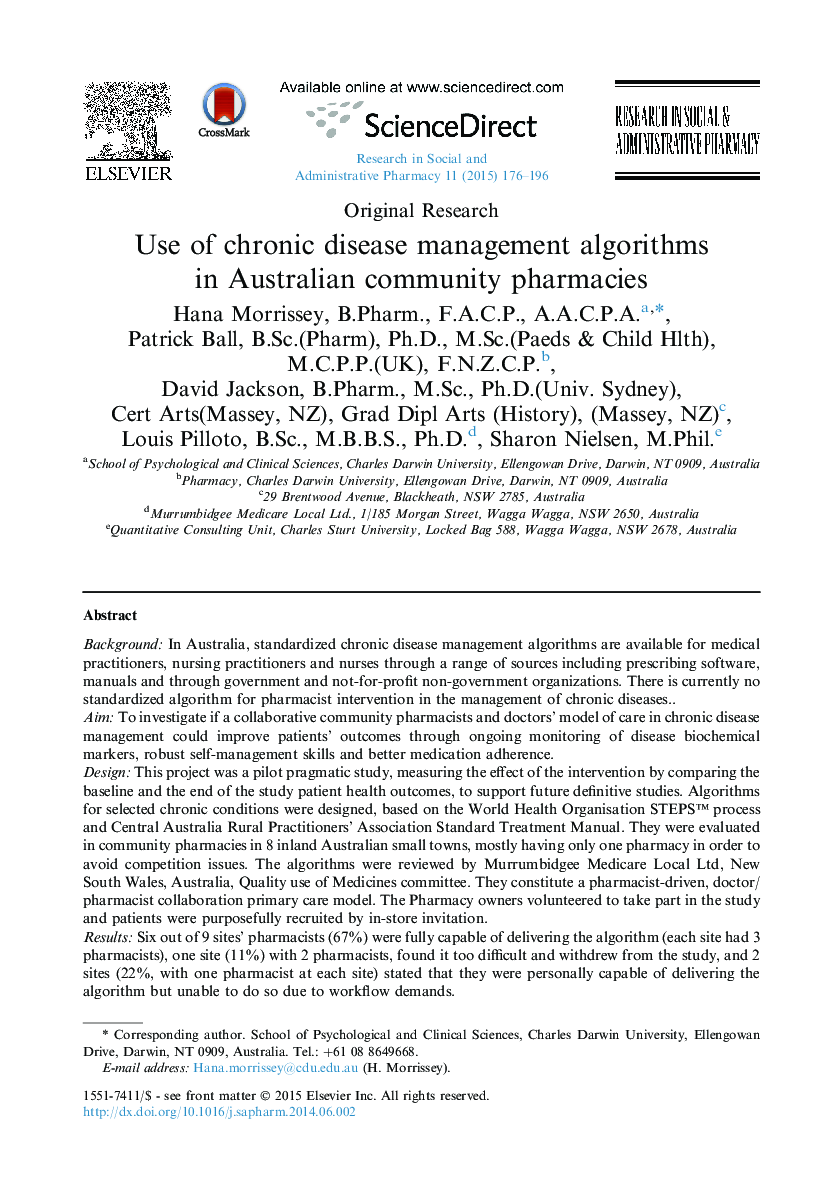| کد مقاله | کد نشریه | سال انتشار | مقاله انگلیسی | نسخه تمام متن |
|---|---|---|---|---|
| 5821495 | 1117597 | 2015 | 21 صفحه PDF | دانلود رایگان |
BackgroundIn Australia, standardized chronic disease management algorithms are available for medical practitioners, nursing practitioners and nurses through a range of sources including prescribing software, manuals and through government and not-for-profit non-government organizations. There is currently no standardized algorithm for pharmacist intervention in the management of chronic diseases..AimTo investigate if a collaborative community pharmacists and doctors' model of care in chronic disease management could improve patients' outcomes through ongoing monitoring of disease biochemical markers, robust self-management skills and better medication adherence.DesignThis project was a pilot pragmatic study, measuring the effect of the intervention by comparing the baseline and the end of the study patient health outcomes, to support future definitive studies. Algorithms for selected chronic conditions were designed, based on the World Health Organisation STEPS⢠process and Central Australia Rural Practitioners' Association Standard Treatment Manual. They were evaluated in community pharmacies in 8 inland Australian small towns, mostly having only one pharmacy in order to avoid competition issues. The algorithms were reviewed by Murrumbidgee Medicare Local Ltd, New South Wales, Australia, Quality use of Medicines committee. They constitute a pharmacist-driven, doctor/pharmacist collaboration primary care model. The Pharmacy owners volunteered to take part in the study and patients were purposefully recruited by in-store invitation.ResultsSix out of 9 sites' pharmacists (67%) were fully capable of delivering the algorithm (each site had 3 pharmacists), one site (11%) with 2 pharmacists, found it too difficult and withdrew from the study, and 2 sites (22%, with one pharmacist at each site) stated that they were personally capable of delivering the algorithm but unable to do so due to workflow demands.ConclusionThis primary care model can form the basis of workable collaboration between doctors and pharmacists ensuring continuity of care for patients. It has potential for rural and remote areas of Australia where this continuity of care may be problematic.
Journal: Research in Social and Administrative Pharmacy - Volume 11, Issue 2, MarchâApril 2015, Pages 176-196
